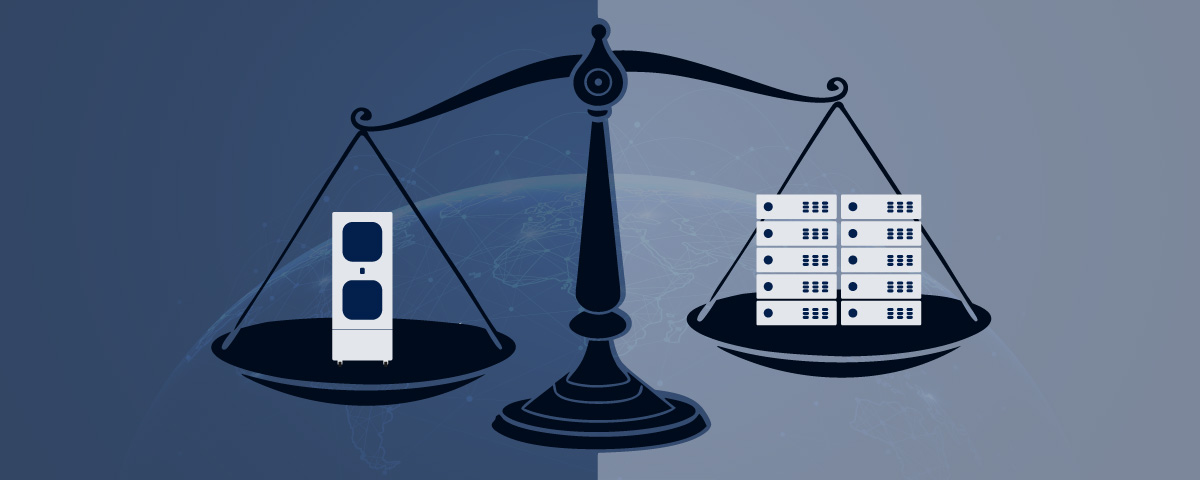For more than a decade, “cloud-first” has been the default strategy for digital transformation. Centralised, scalable, and seemingly cost-effective, the cloud allowed organisations to offload infrastructure, consolidate systems, and move fast.
But in 2025 and beyond, we’re witnessing a fundamental shift: businesses are moving from cloud-first to edge-first strategies. It’s not about abandoning the cloud, but about recognising that cloud alone can’t meet every need, especially when it comes to performance, resilience, and real-time processing.
The cloud isn’t dead — but it’s no longer enough
The cloud revolutionised IT. It offered scalability, accessibility, and the ability to quickly spin up resources. But as workloads change, the limitations of cloud-only approaches are becoming more apparent:
- Latency – Time-sensitive applications can’t afford round trips to central cloud servers.
- Bandwidth – Constant data transfer from edge devices to the cloud is costly and inefficient.
- Resilience – When connectivity fails, cloud reliance becomes a vulnerability.
- Compliance – Certain industries require local data storage and processing due to sovereignty laws.
These challenges don’t mean the cloud is obsolete, far from it. But it means we need a more balanced, distributed approach.
The edge is now where the action is
With the rise of smart devices, sensors, and real-time analytics, the edge is rapidly becoming the frontline of data generation. From autonomous vehicles to hospital equipment, retail sensors to mining machinery, businesses are generating vast amounts of data far from the traditional data centre.
Edge-first strategies bring compute and storage closer to that data, enabling:
- Faster decision-making through low-latency processing
- Reduced backhaul costs by analysing and filtering data on-site
- Continuous operations even during outages or poor connectivity
- Stronger privacy and control by keeping sensitive data local
Why businesses are making the shift
Organisations aren’t just experimenting with edge, they’re building for it. Here’s why:
- Performance – Real-time applications like machine vision, autonomous systems, and critical infrastructure need instant responsiveness.
- Resilience – On-site processing allows operations to continue during cloud outages, ensuring business continuity.
- Security – Data that stays on-site is less vulnerable to interception or unauthorised access.
- Compliance – Localised infrastructure helps meet requirements around data residency, especially in healthcare, finance, and government sectors.
Edge-first thinking is about giving each workload the right environment, not forcing everything into the cloud.
What edge-first looks like in practice
An edge-first approach doesn’t replace cloud infrastructure, it complements it. Cloud remains essential for storage, long-term analytics, and global access. But it’s no longer the only game in town.
In practice, edge-first means:
- Deploying local compute where data is created (factories, branch offices, field sites)
- Running AI models or analytics directly at the edge
- Supporting remote or bandwidth-constrained environments
- Integrating with cloud platforms for hybrid continuity
This is where micro data centres come into play.
How Zella DC supports edge-first infrastructure
Zella DC’s micro data centres are purpose-built for the edge. Whether you’re operating in a busy city or a remote mining site, we make it simple to deploy secure, self-contained infrastructure wherever it’s needed.
- Zella Pro: Indoor, modular, and ideal for branch locations and commercial offices
- Zella Outback: Ruggedised for outdoor environments with extreme conditions
- Zella Max: Modular data centre for scalable, high-density deployments
All Zella DC units include:
- Built-in cooling, power distribution, fire protection, and access control
- Remote monitoring and management
- Fast deployment with minimal site preparation
- Standardisation across all sites for easier scaling
With Zella DC, organisations can adopt edge-first strategies without the traditional overhead of building and maintaining server rooms.
Edge-first is the future, and it’s already here
As data continues to grow and decentralise, the infrastructure to support it must evolve. Cloud-only strategies are no longer sufficient. Businesses that invest in edge-ready infrastructure today will be better positioned for resilience, innovation, and growth tomorrow.
At Zella DC, we’re helping customers rethink what infrastructure can be. From cloud-first to edge-smart, we’re here to support the shift.
Want to explore how edge-first can work for you? Contact us to learn how Zella DC micro data centres can power your edge strategy, wherever you operate.






